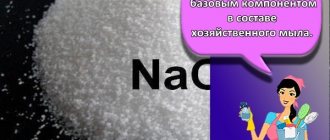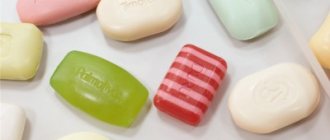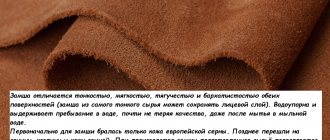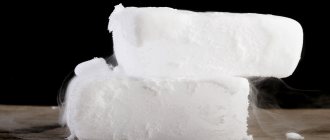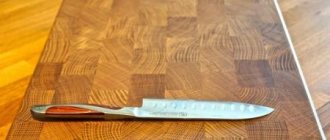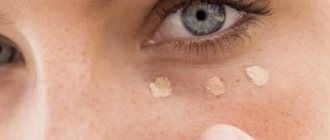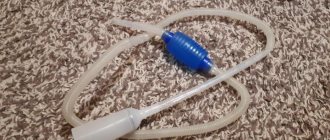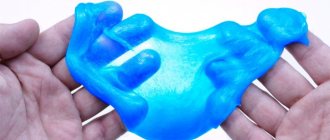Each item has its own instructions in the form of labels with brief instructions on how to care for it. Symbols on tags are often neglected. But in vain! After all, this largely determines how your clothes will look and how long they will last you.
Textile care symbols are used to label products made from textile materials. They determine the rules for processing products for their proper operation, as well as to prevent their premature wear and damage.
There are basic symbols, for example: drying, bleaching, washing, ironing, as well as some additional symbols.
Wash
Machine wash, normal cycleWashing is allowed, including soaking, rinsing, heating, mechanical impact |
HandwashWash only by hand at water temperatures up to 40 °C. Do not rub, squeeze gently, without twisting |
Regular wash in cold waterHand or machine wash at water temperature no higher than 30°C |
Gentle wash in cold waterDelicate hand or machine wash at water temperatures up to 30 °C, neutral detergents, do not subject to strong mechanical treatment, normal rinse, weak spin |
Extra delicate wash in cold waterExtra delicate hand or machine wash at water temperatures up to 30°C, large volume of water, minimal mechanical processing, quick rinse, do not wring by hand |
Regular wash in cold waterHand or machine wash at water temperature up to 30°C |
Gentle wash in cold waterGentle hand or machine wash at water temperatures up to 30°C, neutral detergents, do not subject to strong mechanical treatment, normal rinse, weak spin |
Extra delicate wash in cold waterExtra delicate wash at water temperatures up to 30°C, large volume of water, minimal mechanical processing, quick rinse, do not wring by hand |
Hand wash coldHand wash only at water temperatures up to 30 °C, do not rub, wring out gently, without twisting, handle with care. |
Regular wash in warm waterHand or machine wash at water temperature no higher than 40°C |
Regular wash in warm waterHand or machine wash at water temperatures up to 40°C |
Gentle wash in warm waterDelicate hand or machine wash at a water temperature not exceeding 40 °C, reduced mechanical stress, moderate rinsing with a gradual decrease in temperature (as the water cools), reduced spin |
Gentle wash in warm waterDelicate hand or machine wash at water temperatures up to 40 °C, reduced mechanical stress, moderate rinsing with a gradual decrease in temperature (as the water cools), reduced spin |
Extra delicate wash in warm waterParticularly delicate wash at a water temperature not exceeding 40°C, mechanical stress is greatly reduced, normal rinsing, weak spin, do not wring by hand |
Extra delicate wash in warm waterParticularly delicate wash at water temperatures up to 40°C, mechanical stress is greatly reduced, normal rinsing, weak spin, do not wring by hand |
Hand wash in warm waterHand wash only at water temperatures up to 40 °C, do not rub, wring out gently, without twisting, handle with care. |
Regular wash in hot waterHand or machine wash at water temperatures up to 50°C |
Gentle wash in hot waterDelicate hand or machine wash at temperatures up to 50°C, reduced mechanical stress, moderate rinsing with a gradual decrease in temperature (as the water cools), reduced spin |
Regular wash in hot waterHand or machine wash at initial water temperature no higher than 50°C |
Gentle wash in hot waterDelicate hand or machine wash at an initial water temperature of no higher than 50 °C, reduced mechanical stress, moderate rinsing with a gradual decrease in temperature (as the water cools), reduced spin |
Regular wash in hot waterHand or machine wash at water temperatures up to 60°C |
Gentle wash in hot waterDelicate hand or machine wash at water temperatures up to 60 °C, reduced mechanical stress, moderate rinsing with a gradual decrease in temperature (as the water cools), reduced spin |
Regular wash in hot waterHand or machine wash at water temperature no more than 60°C |
Gentle wash in hot waterDelicate hand or machine wash at a water temperature of no more than 60 °C, reduced mechanical stress, moderate rinsing with a gradual decrease in temperature (as the water cools), reduced spin |
Regular wash in hot waterHand or machine wash at initial water temperature up to 70°C |
Regular wash in hot waterHand or machine wash at water temperature no more than 70°C |
Regular wash in very hot waterHand or machine wash at water temperature up to 95°C, boiling allowed |
Regular wash in very hot waterHand or machine wash at water temperature no higher than 95°C, boiling is allowed |
Gentle wash in very hot waterDelicate hand or machine wash at water temperatures up to 95 °C, reduced mechanical stress, moderate rinsing with a gradual decrease in temperature (as the water cools), reduced spin |
Gentle wash in very hot waterDelicate hand or machine wash at a water temperature not exceeding 95 °C, reduced mechanical stress, moderate rinsing with a gradual decrease in temperature (as the water cools), reduced spin |
Washing is prohibitedDo not wash, handle with care when wet, do not let the product get wet, the product can be dry cleaned |
»
Whitening
Sometimes bleaches are used in the washing process. At this stage you need to be extremely careful. Some of them may leave a white spot or, in the worst case, a hole. So take a close look at your label.
and check if washing with bleach is allowed.
How to use bleach correctly?
| Bleaching is allowed. You can clean the product with chlorine and oxygen bleaches. |
| Bleaching is prohibited. Do not clean the product with chlorine or oxygen bleaches. |
| Chlorine bleaching is prohibited. You can only bleach with oxygen bleaches. |
| Chlorine bleaching is allowed. You can clean the product with chlorine-containing bleaches. |
Drying
Conventional tumble dryingMachine or dryer safe, no special care required |
Low temperature dryingConventional drum drying and low temperature spinning - up to 40°C |
Gentle drying at low temperaturesGentle drying and tumble drying at low temperatures - up to 40°C |
Particularly gentle drying at low temperaturesParticularly gentle drying and tumble drying at low temperatures - up to 40°C |
Drying at medium temperatureConventional drum drying and spinning at medium temperatures - up to 60°C |
Gentle drying at medium temperatureGentle drying and spinning in a tumble dryer at medium temperatures - up to 60°C |
High temperature dryingConventional drum drying and high temperature spinning - up to 80°C |
Fan drying, no heatConventional drum drying and spinning at normal temperature, without heating the air |
Drying verticallyAfter spinning, vertical drying is allowed, hang drying, wringing is possible |
Drying in the shadeThe product must be dried in the shade, away from direct sunlight. |
Vertical drying in the shadeDry the product in a vertical position in the shade and away from direct sunlight |
Horizontal dryingDrying a moisture-saturated product on a horizontal surface in a straightened state |
Horizontal drying in the shadeDrying a moisture-saturated product on a horizontal surface in a straightened state in the shade |
Drying without spinDrying without spinning in a suspended (vertical) state |
Drying without spinning in the shadeDry without spinning in a suspended (vertical) state in the shade, away from direct sunlight |
Tumble drying is prohibitedDo not spin or dry in washing machine |
»
Where are tags attached to clothes?
According to GOST, a control tape containing information about proper care is attached in the following places:
- for coats, jackets, raincoats, suits and other lined clothing - in the side seam and the seam connecting the lining fabric to the hem;
- for raincoats, jackets, capes without lining - in the side seam or the inner edge of the hem;
- for dresses, jackets, blouses, sundresses - in the side seam, back seam or in the middle of the back neck;
- for trousers, shorts, overalls - on the middle seam of the back half of the trousers, on the seam of the belt or in the side seam;
- for skirts - in the side seam or on the front side of the lining near the fastener;
- for overalls - in the area of the hem or side seam;
Care instructions are also attached to underwear and clothing for newborns. But in this case, the marking tape is not sewn into the seam of the product, but a self-adhesive label or a hanging label is used. This is done solely because of the delicacy of the items and the peculiarities of their wearing.
Dry cleaning
Normal dry cleaningDry cleaning with any organic solvent |
Dry cleaning only with special reagentsNormal dry clean using tetrachlorethylene and all solvents listed for symbol "F" |
Delicate dry cleaning with special reagentsDelicate dry cleaning with limited addition of water with careful use of solvents indicated for the “P” symbol, as well as control of mechanical stress and drying temperature, self-cleaning is prohibited |
Dry cleaning with hydrocarbon solvents onlyConventional dry cleaning using only hydrocarbon, gasoline and TFC |
Delicate dry cleaning with hydrocarbon solvents onlyDelicate dry cleaning with limited addition of water with careful use of solvents indicated for the “F” symbol, as well as control of mechanical stress and drying temperature, self-cleaning is prohibited |
Regular wet professional cleaning (aqua-cleaning)Normal wet cleaning and drying according to IEC 456 |
Delicate wet professional cleaningDelicate water cleaning mode with restrictions on the mechanical mode and drying mode, taking into account the characteristics of the product, relative shrinkage - 50+5% |
Particularly gentle wet professional cleaningVery delicate water cleaning mode with restrictions on the mechanical mode and drying mode, taking into account the characteristics of the product, relative shrinkage - 25+2.5% |
Shortened dry cleaning cycleClothes can be cleaned in a shortened cycle. The symbol can be used in combination with a letter |
Dry cleaning at low humidityWhen cleaning, low humidity is acceptable. The symbol can be used in combination with a letter |
Low temperature dry cleaningClothes can be cleaned at moderate temperatures. The symbol can be used in combination with a letter |
Dry cleaning without steamingDo not use steam at the final stage of cleaning. The symbol can be used in combination with a letter |
Dry cleaning prohibitedThe product must not be dry cleaned; removing stains with solvent is prohibited. |
Wet cleaning is prohibited |
»
What standards regulate markings on things?
A label or tag is a type of label that is attached in one way or another to a garment. However, its creation is regulated by world-class standards, which include, among other things, labeling.
The fundamental international standard is ISO 3758:2012. Its analogue in Russia is ISO 3758:2014 “Textile products. Labeling with care symbols." This standard establishes a designation system on clothing labels to describe the most optimal rules for the care of textiles that do not cause damage to the materials used. The use of this symbolism when marking clothing is also determined. GOST 10581-91 “Sewing products. Labeling, packaging, transportation, storage” gives instructions on where tags and labels should be attached.
Ironing
Dry ironing or steamingTo restore the shape and appearance of the product, it can be ironed at any temperature, with or without steam. |
Iron at low temperatureAllowed to iron at a maximum temperature of 110°C (corresponds to the symbol in the form of a single dot on the iron’s thermostat), acceptable for synthetics, nylon, acrylic, polyester, polyamide, acetate; use a cloth pad, do not use steam |
Iron at medium temperatureAllowed to iron at a maximum temperature of 150°C (corresponds to the symbol in the form of two dots on the thermostat of the iron), acceptable for wool and mixed fibers with polyester and viscose; use a damp cloth |
Iron at high temperatureAllowed to iron at a maximum temperature of 200°C (corresponds to the symbol in the form of three dots on the iron thermostat), acceptable for linen and cotton; You can slightly moisten the product |
Do not steamIroning with steam will damage clothes; regular ironing at the specified temperature is recommended. |
Do not ironThe product should not be ironed, steaming or steam treatment should not be used. |
»
What are textile labels made of?
Embedded textile labels are made from three types of materials:
- made of satin - such labels are very soft, the most popular, and do not cause discomfort;
- made of polyester and nylon - good for the price, but quite rigid, so they are used mainly in workwear;
- from rare materials such as Tyvek, nylon tape - most often found in exclusive products.
If a soft tag is sewn into clothing, it can be carefully trimmed, as is often evidenced by the corresponding symbol with scissors. The rigid labels are carefully pulled out of the seam, making sure that the seam itself does not come apart. A cut off hard label will irritate the skin.
Symbols for clients
Rain, high humidity |
Side loading washing machine |
Top loading washing machine |
Dryer |
Detergent, cleaning agent |
Laundry basket |
Full laundry basket |
Iron |
Trousers |
Rules for applying care icons
Symbols indicating the rules for caring for an item must be fixed on labels, directly on the item or, if there is no other option, on the packaging. The tag or label is made of durable materials that are not subject to mechanical stress, including water. The size of the label is calculated in such a way that all its elements are easily viewed and read for a long time. In this case, the label must be sewn in so that all the symbols are visible to the eye, and thus they can be deciphered. If one of the icons for caring for an item is missing, this means that all the care procedures described by it may be applicable to this product.
Let's be smart on the trail
When going outdoors, you need to take care of a change of shoes and clothes. You might get caught in the rain, wade across a river, or just get sweaty. To avoid getting sick, you need to keep your clothes dry, so change into a spare set of underwear as soon as possible.
Wet clothes on a hike can be dried in the sun or wind. To do this, hang it on tree branches, ropes, and place it on an awning. Empty your pockets of all items and turn them outward. You can dry wet items overnight by placing them under your sleeping bag. During sleep, body heat will dry out your pants or sweatshirt.
Drying things by the fire should only be done as a last resort. Place them at some distance from the fire source so that only warmth is felt, not heat. Constantly monitor the state of things, one spark - and you risk being left without things at all.
...and warnings
Many experimenters, in pursuit of new ideas on how to dry clothes in 5 minutes, completely forget about safety precautions. The consequences can be dire. Forbidden:
- use open fire for drying;
- hang objects on an electric heating device;
- ignore the advice on the label;
- dry shoes on the radiator due to possible deformation of the soles.
There are many ways to dry wet things very quickly, they really help in a difficult situation. But always remember the negative side of this process. Think about washing in advance, try to dry your favorite things naturally, then they will delight you for a very long time.
Precautionary measures
You should not thoughtlessly dry the product using the first, seemingly reasonable method you come across. This can ruin an item or household appliance. Here are a few tips to consider before you start drying:
- Under no circumstances should you dry things over a stove or other open fire sources. Firstly, some products may shrink. Secondly, the fabric is flammable; a very small thread can lead to a fire. At best, the clothes will be damaged, at worst, a fire will start.
- Do not dry clothes on electrical heating appliances, such as a heater. You can get an electric shock and cause a short circuit, which will ruin both your clothes and equipment.
- Also, do not neglect the instructions that are on the label. Thanks to them, you can find out what type of washing and drying is suitable for the fabric. For example, wool, silk and lace cannot be dried directly with an iron; they should only be ironed through gauze.
- A common mistake is to dry shoes on a radiator. However, this is strictly forbidden. Because of this method, the sole becomes deformed and quickly becomes unusable. You need to wash shoes and sneakers in a special bag.
- You should not resort to emergency drying too often, as this is a lot of stress for the fabric. The item can quickly wear out and become unusable.
Iron - ironing
This sign is the easiest to recognize because its symbol is a diagrammatic iron (1).
- If the iron is crossed out (2), then ironing of the item is strictly prohibited.
- Inside the symbol you can see dots (3), which determine the temperature allowed for ironing the material. One point – delicate mode up to 110 degrees Celsius, two – up to 150, three – up to 200.
- When the appliance has two lines at the bottom, diverging in different directions (which indicates steam) and they are crossed out (4), the outfit cannot be steamed.
What to do with tags on clothes
Every third consumer is accustomed to cutting off such tags for convenience, but they should at least not be thrown away, but, if possible, saved so that information about the item is at hand. It is enough to ignore at least one recommendation, and your favorite blouse will be ruined by improper ironing or washing. This is especially true for dry cleaners, where you can mistakenly take an item in the belief that it can be professionally cleaned. Unfortunately, dry cleaning workers are not always competent.
You need to think about caring for your clothes at the stage of choosing them in the store. By paying attention to the label, you can save yourself the hassle of hand washing or additional cleaning costs. One way or another, every consumer who wants to preserve their belongings for as long as possible should know the decoding of the symbols.

